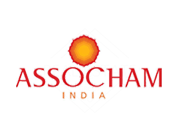Abe, H., Sakaguchi, M., Odashima, S. and Arichi, S. (1982). Protective effect of saikosaponin-d isolated from Bupleurum falcatum L. on CCl4-induced liver in the rat. Naunyn-Schmiedeberg’s Archiv. Pharmacol. 320: 266-71.
Abe, H., Orita, M., Konishi, H., Arichi, S. and Odashima, S. (1986). Effects of saikosaponin-d on aminonucleoside nephrosis in rats. Europ. J. Pharmacol. 120: 171-8. doi:10. 1016/0014-2999(86)90537-6.
Aimi, N., Fujimoto, H. and Shibata, S. (1968). The chemical studies on oriental plant drugs. XVIII. The constituents of Bupleurum spp. (3). Saikogenins E and G. Chem. Pharmac. Bull. 16: 641-6.
Alexandrova, A., Petrov, L., Vwlkova, L., Dolashki, A., Tsvetanove, E., Georgieva, A. and Dolashka, P. (2021). Antioxidant activity of fractions isolated hemolymph of garden snail Helix lucorum. J. Pharm. Pharmacog. Res. 9: 143-52.
Amic, D., Davidovic-Amic, D., Beslo, D. and Trinajstic, N. (2003). Structure-radical scavenging activity relationship of flavonoids. Croat. Chem. Acta. 76: 55-61.
Bidchol, A. M., Wilfred, A., Abhijna, P. and Harish, R. (2011). Free radical scavenging activity of aqueous and ethanolic extract of Brassica oleracea L. var. italica. Food Bioprocess Technol. 4: 1137-43. doi:10.1007/s11947-009-0196-9.
Boudet, A. M. (2007). Evaluation and current status of research in phenolic compounds. Phytochem. 68: 2722-35. doi:10.1016/j.phytochem.2007.06.012.
Choi, H., Kim, M. and Heo, K. (2006). Anatomy of Bupleurum latissimum Nakai (Apiaceae), an endemic species of Korea. Kor. J. Medi. Crop Sci. 14: 342-6.
Cuvelier, M. E., Richard, H. and Berset, C. (1992). Comparison of the antioxidative activity of some acid-phenols; structure-activity relationship. Biosci. Biotech. Biochem. 56: 324-25.
Diplock, A., Charleux, J., Grozier-Willi, G., Kok, K., Rice-Evans, C., Roverfroid, M., Stahl, W., Vina-Gulcin, I., Oktay, M., Kufrevioglu, O. I. and Aslan, N. A. (2002). Determination of antioxidant activity of lichen Chtraria islandica (L.) Ach. J. Ethnopharm. 79: 325-29. doi:10.1016/S0378-8741(01)00396-8.
Gulcin, I., Oktay, M., Kirecci, E. and Kufrevioglu, O. I. (2003). Screening of antioxidant and antimicrobial activities of anise (Pimpinella anisum L.) seed extracts. Food Chem. 83: 371-82. doi:10.1016/S0308-8146(03)00098-0.
Guleria, I., Kumaria, A., Lacaille-Dubois, M. A., Saini, A. K., Kumar, V., Saini, R. V., Lal, U. R., Gaurf, N. A., Kumari, S., Seth, A., Dhatwalia, J., Thakur, S. and Lal, S. (2022). In-vitro antimicrobial, antioxidant, anti-inflammatory, and cytotoxic activities of Populus ciliata bark and leaves: A comparative study. South Afri. J. Bot. 148: 238-50. doi:10.1016/j.sajb.2022.04.040.
Halliwell, B. (1997). Antioxidants and human disease: A general introduction. Nut. Rev. 55: 44-52.
Hinneburg, I., Dorman, H. J. D. and Hiltunen, R. (2006). Antioxidant activities of extracts from selected culinary herbs and spices. Food Chem. 97: 122-9. doi:10.1016/j.foodchem.2005.03.028.
Jeong, C. H., Choi, G. N., Kim, J. H., Kwak, J. H., Kang, S. T., Choi, S. G. and Heo, H. J. (2009). In vitro Antioxidant properties and phenolic composition of Korean commercial vinegars. Food Sci. Biotech. 18: 1258-62.
Joslyn, M. A. (1970). Methods in food analysis. physical, chemical and instrumental methods of analysis (2nd ed.), Academic Press, New York, pp: 109-40.
Kannan, R. R. R., Arumugam, R. and Anantharaman, P. (2010). In vitro antioxidant activities of ethanol extract from Enhalus acoroides (L.F.) Royle. Asian Pacific J. Tropic. Medi. 3: 898-901. doi:10.1016/S1995-7645(10)60216-7.
Kim, H., Kim, S. H., Huh, C. K., Seo, K. S., Park, T. Y. and Yun, K. W. (2015). Determination of saikosaponins in three Bupleurum plants by HPLC analysis. Res. Crop. 16: 195-99.
Kim, K., Chae, Y. and Lee, B. (2000). Comparison of saikosaponin content in Bupleurum falcatum L. cultivars, ‘Jeongsun’ and ‘Mishima’. Kor. J. Medi. Crop Sci. 8: 234-42.
Kim, M., So, S., Park, H., Seo, E., Kwon, H. and Song, H. (2006). Ecology of Bupleurum latissimum population. J. Kor. Soc. Environ. Restor. Technol. 9: 78-85.
Lakic, N. S., Mimica-Dukic, N. M., Isak, J. M. and Bozin, B. N. (2010). Antioxidant properties of Galium verum L. (Rubiaceae) extracts. Central Euro. J. Biol. 5: 331-37. doi:10.2478/s11535-010-0022-4.
Li, S., Li, S. K., Gan, R. Y., Song, F. L., Kuang, L. and Li, H. B. (2013). Antioxidant capacities and total phenolic contents of infusions from 223 medicinal plants. Ind. Crops Prod. 51: 289-98. doi:10.1016/j.indcrop.2013.09.017.
Liu, D. H., Shi, J., Ibarra, A. C., Kakuda, Y. and Xue, S. J. (2008). The scavenging capacity and synergistic effects of lycopene, vitamin E, vitamin C, and β-carotene mixtures on the DPPH free radical. LWT-Food Sci. Technol. 41: 1344-49. doi:10.1016/j.lwt.2007.08.001.
Matsumoto, T., Cyong, J. C., Kiyohara, H., Abe, A., Hirano, M., Danbara, H. and Yamada, H. (1993). The pectic polysaccharide from Bupleurum falcatum L. enhance immune-complexes binding to peritoneal macrophages through Fc receptor expression. Int. J. Immunopharm. 15: 683-93.
Mizoguchi, Y., Tsutsui, H., Yamamoto, S. and Morisawa, S. (1985). Effects of saiko (Chai-Hu) on antibody response and mitogeninduced lymphocyte transformation in vitro. J. Med. Pharmacol. Soc. Wakan-Yaku 2: 330-36.
Mziouid, A., Chebli, B., Berrabah, M., Chebli, H., Heimeur, N., Bounimi, S. and Mayad, E. H. (2022). Phytochemical screening and antioxidant activity of four Moroccan aromatic plant methanolic extracts and essential oils. Arab. J. Med. Aroma. Pl. 8:117232.
Prakash, D., Upadhyay, G., Singh, B. N. and Singh, H. B. (2007). Antioxidant and free radical-scavenging activities of seeds and agri-wastes of some varieties of soybean (Glycine max). Food Chem. 104: 783-90. doi:10.1016/j.foodchem. 2006.12.029.
Rice-Evans, C., Miller, N. and Paganga, G (1996). Structure-antioxidant activity relationships of flavonoids and phenolic acids. Free Radical Biol. Medi. 20: 933-56.
Saggu, K., Tomer, V., Kumar, A. and Pandey, P. (2023). Consideration of phytonutrients, probiotics and prebiotics for enhanced immunity during disaster relief situation - A review. Clinic. Nutri. Open Sci. 47: 131-46. doi:10.1016/j.nutos.2022.12.011.
Sanchez-Moreno, C., Larrauri, J. A. and Saura-Calixto, F. (1998). A procedure to measure the antiradical efficiency of polyphenols. J. Sci. Food Agric. 76: 270-76. doi:10.1002/(SICI)1097-0010(199802).
Sidor, A. and Gramza-Michałowska, A. (2015). Advanced research on the antioxidant and health benefit of elderberry (Sambucus nigra) in food - a review. J. Func. Food 18: 941-58. doi:10.1016/j.jff.2014.07.012.
So, S., Han, K., Kim, M., Park, H., Seo, E., Kim, Y. P. and Kim, T. H. (2008a). Pollination mechanism of Bupleurum latissmum (Apiaceae). Kor. J. Pl. Taxano. 38: 43-50.
So, S., Park, H., Seo, E., Han, K., Kim, M. and Park, K. R. (2008b). Numerical taxonomic analyses of Bupleurum latissimum(Apiaceae). Kor. J. Pl. Taxano. 38: 31-42.
Sun, X. B., Matsumoto, T. and Yamada, H. (1991). Effect of a polysaccharide fraction from the roots of Bupleurum falcatum L. on experimental gastric ulcer models in rats and mice. J. Pharm. Pharmacol. 43: 699-704.
Takagi, K. and Shibata, M. (1969). Pharmacological studies on Bupleurum falcatum: II. Antiinflammatory and other pharmacological actions of crude saikosides. Yakugaku Zasshi, 89: 1367-78.
Teng, L., Guo, X., Ma, Y., Xu, L., Wei, J. and Xiao, P. (2023). A comprehensive review on traditional and modern research of the genus Bupleurum (Bupleurum L., Apiaceae) in recent 10 years. J. Ethnopharm. 306: 116-29. doi:10.1016/j.jep. 2022.116129.
Tuberoso, C. I. G., Kowalczyk, A., Sarritzu, E. and Cabras, P. (2007). Determination of antioxidant compounds and antioxidant activity in commercial oilseeds for food use. Food Chem. 103: 1494-501. doi:10.1016/j.foodchem.2006.08.014.
Velioglu, Y. S., Mazza, G., Gao, L. and Oomah, B. D. (1998). Antioxidant activity and total phenolics in selected fruits, vegetables and grain products. J. Agric. Food Chem. 26: 4113-17. doi:10.1021/jf9801973.
Whang, H. J., Han, W. S. and Yoon, K. R. (2001). Quantitative analysis of total phenolic content in apple. Anal. Sci. Technol. 14: 377-83.
Xia, D., Wu, X., Shi, J., Yang, Q. and Zhang, Y. (2010). Phenolic compounds from the edible seeds extract of Chinese Mei (Prunus mume Sieb. Et Zucc.) and their antimicrobial activity. LWT-Food Sci. Technol. 44: 347-9. doi:10.1016/j.lwt.2010. 05. 017.
Yamada, H., Ra, K. S., Kiyohara, H., Cyong, J. C. and Otsuka, Y. (1989). Structural characterization of an anticomplementary pectic polysaccharide from the roots of Bupleurum falcatum L. Carbohyd. Res. 189: 209-26. doi:10.1016/0008-6215(89)84098-4.
Yamada, H., Sun, X. B., Matsumoto, T., Ra, K. S., Hirano, M. and Kiyohara, H. (1991). Purification of antiulcer polysaccharides from the roots of Bupleurum falcatum L. Pl. Medi. 57: 555-59. doi:10.1055/s-2006-960205.
Zhang, Y., Li, Y., Ren, X., Zhang, X., Wu, Z. and Liu, L. (2023). The positive correlation of antioxidant activity and prebiotic effect about oat phenolic compounds. Food Chem. 402: 134231. doi:10.1016/j.foodchem.2022.134231.
Abe, H., Orita, M., Konishi, H., Arichi, S. and Odashima, S. (1986). Effects of saikosaponin-d on aminonucleoside nephrosis in rats. Europ. J. Pharmacol. 120: 171-8. doi:10. 1016/0014-2999(86)90537-6.
Aimi, N., Fujimoto, H. and Shibata, S. (1968). The chemical studies on oriental plant drugs. XVIII. The constituents of Bupleurum spp. (3). Saikogenins E and G. Chem. Pharmac. Bull. 16: 641-6.
Alexandrova, A., Petrov, L., Vwlkova, L., Dolashki, A., Tsvetanove, E., Georgieva, A. and Dolashka, P. (2021). Antioxidant activity of fractions isolated hemolymph of garden snail Helix lucorum. J. Pharm. Pharmacog. Res. 9: 143-52.
Amic, D., Davidovic-Amic, D., Beslo, D. and Trinajstic, N. (2003). Structure-radical scavenging activity relationship of flavonoids. Croat. Chem. Acta. 76: 55-61.
Bidchol, A. M., Wilfred, A., Abhijna, P. and Harish, R. (2011). Free radical scavenging activity of aqueous and ethanolic extract of Brassica oleracea L. var. italica. Food Bioprocess Technol. 4: 1137-43. doi:10.1007/s11947-009-0196-9.
Boudet, A. M. (2007). Evaluation and current status of research in phenolic compounds. Phytochem. 68: 2722-35. doi:10.1016/j.phytochem.2007.06.012.
Choi, H., Kim, M. and Heo, K. (2006). Anatomy of Bupleurum latissimum Nakai (Apiaceae), an endemic species of Korea. Kor. J. Medi. Crop Sci. 14: 342-6.
Cuvelier, M. E., Richard, H. and Berset, C. (1992). Comparison of the antioxidative activity of some acid-phenols; structure-activity relationship. Biosci. Biotech. Biochem. 56: 324-25.
Diplock, A., Charleux, J., Grozier-Willi, G., Kok, K., Rice-Evans, C., Roverfroid, M., Stahl, W., Vina-Gulcin, I., Oktay, M., Kufrevioglu, O. I. and Aslan, N. A. (2002). Determination of antioxidant activity of lichen Chtraria islandica (L.) Ach. J. Ethnopharm. 79: 325-29. doi:10.1016/S0378-8741(01)00396-8.
Gulcin, I., Oktay, M., Kirecci, E. and Kufrevioglu, O. I. (2003). Screening of antioxidant and antimicrobial activities of anise (Pimpinella anisum L.) seed extracts. Food Chem. 83: 371-82. doi:10.1016/S0308-8146(03)00098-0.
Guleria, I., Kumaria, A., Lacaille-Dubois, M. A., Saini, A. K., Kumar, V., Saini, R. V., Lal, U. R., Gaurf, N. A., Kumari, S., Seth, A., Dhatwalia, J., Thakur, S. and Lal, S. (2022). In-vitro antimicrobial, antioxidant, anti-inflammatory, and cytotoxic activities of Populus ciliata bark and leaves: A comparative study. South Afri. J. Bot. 148: 238-50. doi:10.1016/j.sajb.2022.04.040.
Halliwell, B. (1997). Antioxidants and human disease: A general introduction. Nut. Rev. 55: 44-52.
Hinneburg, I., Dorman, H. J. D. and Hiltunen, R. (2006). Antioxidant activities of extracts from selected culinary herbs and spices. Food Chem. 97: 122-9. doi:10.1016/j.foodchem.2005.03.028.
Jeong, C. H., Choi, G. N., Kim, J. H., Kwak, J. H., Kang, S. T., Choi, S. G. and Heo, H. J. (2009). In vitro Antioxidant properties and phenolic composition of Korean commercial vinegars. Food Sci. Biotech. 18: 1258-62.
Joslyn, M. A. (1970). Methods in food analysis. physical, chemical and instrumental methods of analysis (2nd ed.), Academic Press, New York, pp: 109-40.
Kannan, R. R. R., Arumugam, R. and Anantharaman, P. (2010). In vitro antioxidant activities of ethanol extract from Enhalus acoroides (L.F.) Royle. Asian Pacific J. Tropic. Medi. 3: 898-901. doi:10.1016/S1995-7645(10)60216-7.
Kim, H., Kim, S. H., Huh, C. K., Seo, K. S., Park, T. Y. and Yun, K. W. (2015). Determination of saikosaponins in three Bupleurum plants by HPLC analysis. Res. Crop. 16: 195-99.
Kim, K., Chae, Y. and Lee, B. (2000). Comparison of saikosaponin content in Bupleurum falcatum L. cultivars, ‘Jeongsun’ and ‘Mishima’. Kor. J. Medi. Crop Sci. 8: 234-42.
Kim, M., So, S., Park, H., Seo, E., Kwon, H. and Song, H. (2006). Ecology of Bupleurum latissimum population. J. Kor. Soc. Environ. Restor. Technol. 9: 78-85.
Lakic, N. S., Mimica-Dukic, N. M., Isak, J. M. and Bozin, B. N. (2010). Antioxidant properties of Galium verum L. (Rubiaceae) extracts. Central Euro. J. Biol. 5: 331-37. doi:10.2478/s11535-010-0022-4.
Li, S., Li, S. K., Gan, R. Y., Song, F. L., Kuang, L. and Li, H. B. (2013). Antioxidant capacities and total phenolic contents of infusions from 223 medicinal plants. Ind. Crops Prod. 51: 289-98. doi:10.1016/j.indcrop.2013.09.017.
Liu, D. H., Shi, J., Ibarra, A. C., Kakuda, Y. and Xue, S. J. (2008). The scavenging capacity and synergistic effects of lycopene, vitamin E, vitamin C, and β-carotene mixtures on the DPPH free radical. LWT-Food Sci. Technol. 41: 1344-49. doi:10.1016/j.lwt.2007.08.001.
Matsumoto, T., Cyong, J. C., Kiyohara, H., Abe, A., Hirano, M., Danbara, H. and Yamada, H. (1993). The pectic polysaccharide from Bupleurum falcatum L. enhance immune-complexes binding to peritoneal macrophages through Fc receptor expression. Int. J. Immunopharm. 15: 683-93.
Mizoguchi, Y., Tsutsui, H., Yamamoto, S. and Morisawa, S. (1985). Effects of saiko (Chai-Hu) on antibody response and mitogeninduced lymphocyte transformation in vitro. J. Med. Pharmacol. Soc. Wakan-Yaku 2: 330-36.
Mziouid, A., Chebli, B., Berrabah, M., Chebli, H., Heimeur, N., Bounimi, S. and Mayad, E. H. (2022). Phytochemical screening and antioxidant activity of four Moroccan aromatic plant methanolic extracts and essential oils. Arab. J. Med. Aroma. Pl. 8:117232.
Prakash, D., Upadhyay, G., Singh, B. N. and Singh, H. B. (2007). Antioxidant and free radical-scavenging activities of seeds and agri-wastes of some varieties of soybean (Glycine max). Food Chem. 104: 783-90. doi:10.1016/j.foodchem. 2006.12.029.
Rice-Evans, C., Miller, N. and Paganga, G (1996). Structure-antioxidant activity relationships of flavonoids and phenolic acids. Free Radical Biol. Medi. 20: 933-56.
Saggu, K., Tomer, V., Kumar, A. and Pandey, P. (2023). Consideration of phytonutrients, probiotics and prebiotics for enhanced immunity during disaster relief situation - A review. Clinic. Nutri. Open Sci. 47: 131-46. doi:10.1016/j.nutos.2022.12.011.
Sanchez-Moreno, C., Larrauri, J. A. and Saura-Calixto, F. (1998). A procedure to measure the antiradical efficiency of polyphenols. J. Sci. Food Agric. 76: 270-76. doi:10.1002/(SICI)1097-0010(199802).
Sidor, A. and Gramza-Michałowska, A. (2015). Advanced research on the antioxidant and health benefit of elderberry (Sambucus nigra) in food - a review. J. Func. Food 18: 941-58. doi:10.1016/j.jff.2014.07.012.
So, S., Han, K., Kim, M., Park, H., Seo, E., Kim, Y. P. and Kim, T. H. (2008a). Pollination mechanism of Bupleurum latissmum (Apiaceae). Kor. J. Pl. Taxano. 38: 43-50.
So, S., Park, H., Seo, E., Han, K., Kim, M. and Park, K. R. (2008b). Numerical taxonomic analyses of Bupleurum latissimum(Apiaceae). Kor. J. Pl. Taxano. 38: 31-42.
Sun, X. B., Matsumoto, T. and Yamada, H. (1991). Effect of a polysaccharide fraction from the roots of Bupleurum falcatum L. on experimental gastric ulcer models in rats and mice. J. Pharm. Pharmacol. 43: 699-704.
Takagi, K. and Shibata, M. (1969). Pharmacological studies on Bupleurum falcatum: II. Antiinflammatory and other pharmacological actions of crude saikosides. Yakugaku Zasshi, 89: 1367-78.
Teng, L., Guo, X., Ma, Y., Xu, L., Wei, J. and Xiao, P. (2023). A comprehensive review on traditional and modern research of the genus Bupleurum (Bupleurum L., Apiaceae) in recent 10 years. J. Ethnopharm. 306: 116-29. doi:10.1016/j.jep. 2022.116129.
Tuberoso, C. I. G., Kowalczyk, A., Sarritzu, E. and Cabras, P. (2007). Determination of antioxidant compounds and antioxidant activity in commercial oilseeds for food use. Food Chem. 103: 1494-501. doi:10.1016/j.foodchem.2006.08.014.
Velioglu, Y. S., Mazza, G., Gao, L. and Oomah, B. D. (1998). Antioxidant activity and total phenolics in selected fruits, vegetables and grain products. J. Agric. Food Chem. 26: 4113-17. doi:10.1021/jf9801973.
Whang, H. J., Han, W. S. and Yoon, K. R. (2001). Quantitative analysis of total phenolic content in apple. Anal. Sci. Technol. 14: 377-83.
Xia, D., Wu, X., Shi, J., Yang, Q. and Zhang, Y. (2010). Phenolic compounds from the edible seeds extract of Chinese Mei (Prunus mume Sieb. Et Zucc.) and their antimicrobial activity. LWT-Food Sci. Technol. 44: 347-9. doi:10.1016/j.lwt.2010. 05. 017.
Yamada, H., Ra, K. S., Kiyohara, H., Cyong, J. C. and Otsuka, Y. (1989). Structural characterization of an anticomplementary pectic polysaccharide from the roots of Bupleurum falcatum L. Carbohyd. Res. 189: 209-26. doi:10.1016/0008-6215(89)84098-4.
Yamada, H., Sun, X. B., Matsumoto, T., Ra, K. S., Hirano, M. and Kiyohara, H. (1991). Purification of antiulcer polysaccharides from the roots of Bupleurum falcatum L. Pl. Medi. 57: 555-59. doi:10.1055/s-2006-960205.
Zhang, Y., Li, Y., Ren, X., Zhang, X., Wu, Z. and Liu, L. (2023). The positive correlation of antioxidant activity and prebiotic effect about oat phenolic compounds. Food Chem. 402: 134231. doi:10.1016/j.foodchem.2022.134231.










